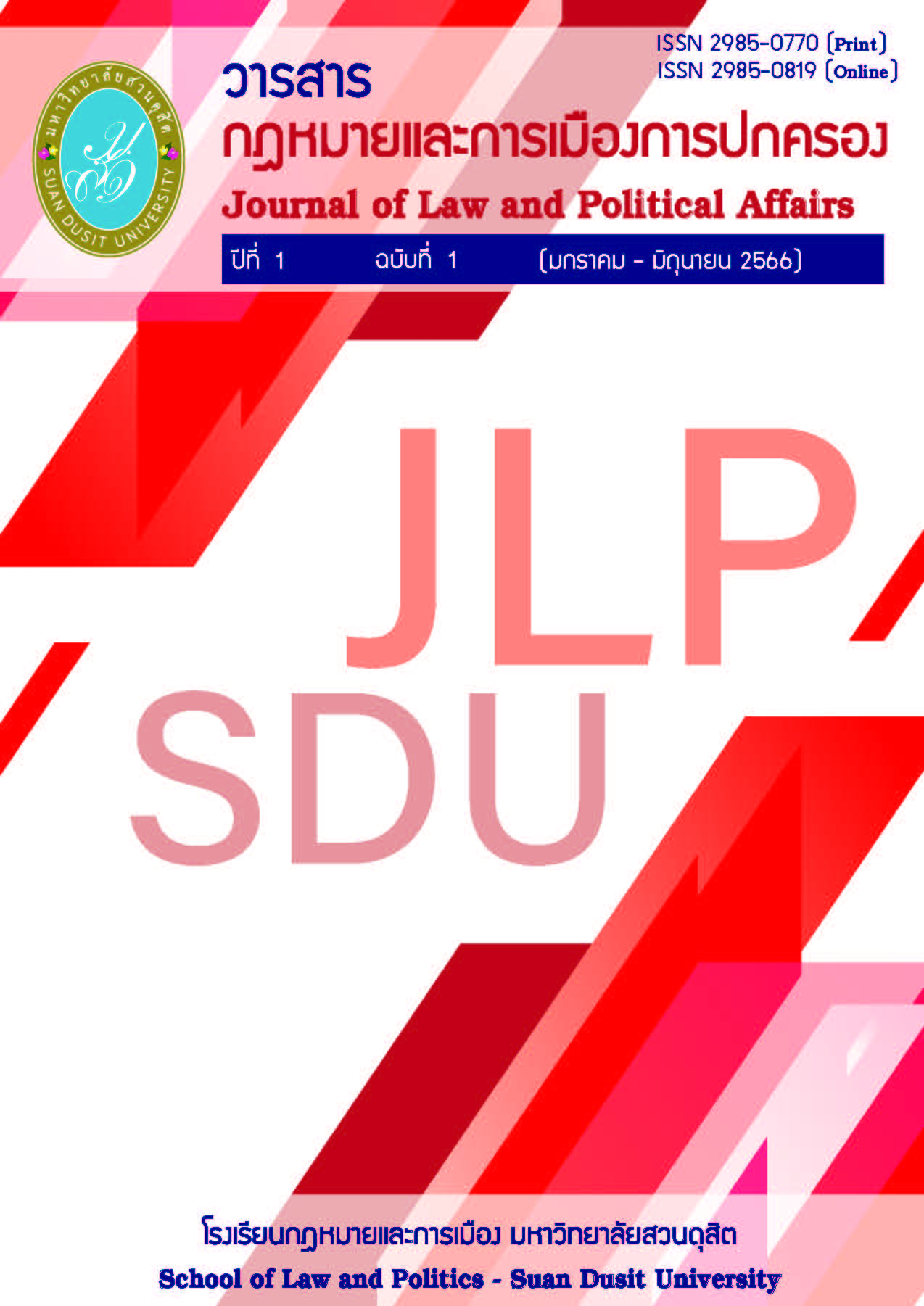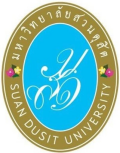Development of the JUDA program to assist at-risk children and youth
Surat Saruang
Keywords:
Assistance for children and youth, program efficiency development, at-risk children and youth.Abstract
The purpose of this research was to develop the efficiency of the program module in helping children and youth. Self-assessment of children and youth and promoting the participation of government agencies, the private sector, and the public sector in giving advice and helping children and youth, people from government, private and public sectors. The results showed that there were 3 modules that had been developed: 1) Module-Child is a module for children and youth participating in the activities to register as members of the JUDA program system, 2) Module-Help is a module that looks like a chat bot area for students whose members are members who have passed self-evaluation and choose a hero to give advice, 3) Module-Hero is a module that allows kind adults in society to register as members of the JUDA program. The self-assessment of children and young people found that most children and young people had a low level of victimization. Slightly violent behavior and had a mild substance abuse behavior as well for children and youth, risk groups that should be monitored include the use of volatile substances and a small amount of marijuana. Most of them are not directly related to drugs, but there is a part in knowing and knowing that different types of drugs have been sold or is anyone using it?. The drugs that children and young people are known to use in the community are methamphetamine, ice, ecstasy, marijuana, volatile substances, and sex drugs, etc.
References
พร้อมเลิศ หล่อวิจิตร. (2555). คู่มือเขียนแอพ Android สำหรับผู้เริ่มต้น. โปรวิชั่น : กรุงเทพฯ.
เปมิกา สนิทพจน์. (2565). การพัฒนารูปแบบการปฏิบัติงานของเจ้าหน้าที่ตำรวจในการดำเนินคดีเด็กอายุไม่เกิน 15 ปี. ปรัชญาดุษฎีนิพนธ์ มหาวิทยาลัยมหิดล.
สุชาดา กีระนันทน์. (2557). คําถามคำตอบเกี่ยวกับการทำเหมืองข้อมูลเบื้องต้น. สืบค้นเมื่อ 24 กันยายน 2557. จาก http://web.kku.ac.th/wichuda/Knowlage/6DataMining /Datamining _Suchada.pdf.
สุรัตน์ สาเรืองและคณะ. (2565). การพัฒนาประสิทธิภาพโปรแกรมประยุกต์สำหรับการรวบรวมข้อมูลการกระทำผิดของเด็กและเยาวชนในระดับสถานีตำรวจ. กรุงเทพฯ : สำนักงานการวิจัยแห่งชาติ.
สำนักงานตำรวจแห่งชาติ. (2565). เปิดสถิติคดีเด็กและเยาวชนกับโอกาสที่หวังให้กลับตัวเป็นคนดีคืนสังคม. 11 สืบค้น 12 สิงหาคม 2565. จาก https://www.springnews.co. th/feature/828366.
อลิสา สุขแก้ว (2561). Mobile Application คืออะไร และมีประโยชน์อย่างไร. สืบค้นเมื่อ 15 พฤษภาคม 2564. จาก https://www.mindphp.com/forums/viewtopic.php?f=198&t=45583.
Arseneault, Tremblay, Boulerice, S覵in และ Jean-Franæ. (2011) . Minor physical anomalies and family adversity as risk factors for violent delinquency in adolescence. Reviewed from www.ajp.psychiatryonline.org /doi/full/ 10.1176/appi.ajp.157.6.917.
Debbie J. Goodman and Ron Grimming. (2016). Juvenile Justice: A Collection of True-Crime Cases 1st Edition. English : Pearson; 1st edition (October 4, 2007).
Hossain. E. (2011). Juvenile delinquency is a problem. Retrieved July 5, 2012, Reviewed from http://emonhossain.hubpages.com./hub/Juvenile-Delinquency-is-a-problem.
Louis Howell. (2015). Causes of Juvenile Delinquency. English : GRIN Verlag (November 30, 2015).
Priyanka Yadav. (2016). Juvenile Delinquency as a Behavioural Problem. The International Journal of Indian Psychology Volume 4, Issue 1, No. 76.
Downloads
Published
How to Cite
Issue
Section
License
Copyright (c) 2023 School of Laws and Politics, Suan Dusit University

This work is licensed under a Creative Commons Attribution-NonCommercial-NoDerivatives 4.0 International License.
ลิขสิทธิ์ต้นฉบับที่ได้รับการตีพิมพ์ในวารสารกฎหมายและการเมืองการปกครอง มหาวิทยาลัยสวนดุสิต ห้ามผู้ใดนำข้อความทั้งหมดหรือบางส่วนไปพิมพ์ซ้ำ เว้นแต่จะได้รับอนุญาตอย่างเป็นลายลักษณ์อักษรจากโรงเรียนกฎหมายและการเมือง มหาวิทยาลัยสวนดุสิต นอกจากนี้ เนื้อหาที่ปรากฎในบทความเป็นความรับผิดชอบของผู้เขียน ทั้งนี้ไม่รวมความผิดพลาดอันเกิดจากเทคนิคการพิมพ์







